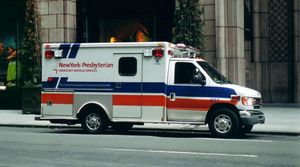“Thunderclap headache” is a surprisingly poetic term for “the worst headache of your life.” These headaches come with a sudden force that may literally knock a person over. They seem to come out of the blue, as if some predatory creature living inside of your skull has suddenly awakened and taken a big chunk out of your brain.
Thunderclap headaches are medical emergencies. They are not a medical condition in and of themselves but are usually the symptom of a potentially deadly condition such as a blood clot in the brain, swelling blood vessel (brain aneurysm) or bleeding in the brain (a subarachnoid hemorrhage.) Death can occur within hours. Other causes include meningitis, stroke or a burst pituitary gland (pituitary apoplexy.)
Symptoms
There are no warning symptoms to thunderclap headaches. One second a person feels normal and the next he or she is crippled by head pain. The Mayo Clinic describes the pain as feeling “like a kick to the back of the head.” Others have described it as the worst headache of their lives.
With head pain this severe, other symptoms soon follow like nausea, vomiting or vision problems. If causes are severe enough, such as with bleeding inside of the brain, the person may become unconscious. The pain lasts anywhere from an hour to 10 days. The Mayo Clinic reports that pain may recede slightly after the first minute that the thunderclap headache begins, which may give a false sense that the headache will get better on its own.
Treatment
Treatment depends upon the diagnosis about what is causing the headache. Since burst or swollen thyroid glands or blood vessels in the brain can cause sudden death, these conditions need to be checked for first. Blood clots in the brain can also be checked for. The patient needs to be immediately scanned by imaging equipment like a CAT scan or MRI. If the scans show one of these problems, then the patient needs to go into surgery right away in order to stop the bleeding.
If scanning tests are inconclusive, doctors will most likely perform a spinal tap or lumbar puncture in order to examine cerebro-spinal fluid. The fluid can reveal signs of infection or where internal bleeding may be occurring.
If the patient is showing other symptoms such as high fever, stiff neck or strange red marks on the skin then the cause may be meningitis. In order for the thunderclap headache to go away, the patient needs to be treated for meningitis.
Painkillers are often given intravenously if the patient is vomiting. Which painkiller is given is entirely at the discretion of the doctor and the patient’s particular circumstances.
References:
“Migraines For Dummies.” Diane Stafford & Jennifer Shoquist, MD. Wiley Publishing; 2003.
Mayo Clinic. “Thunderclap Headaches.” http://www.mayoclinic.com/health/thunderclap-headaches/DS00644
The Internet Stroke Center. “Subarachnoid Hemorrhage.” http://www.strokecenter.org/patients/sah.htm
Ohio Health. “Thunderclap Headaches.” http://www.ohiohealth.com/bodymayo.cfm?xyzpdqabc=0&id;=6&action;=detail&ref;=2640


